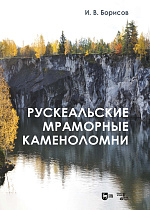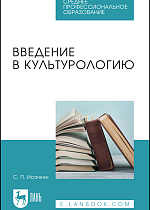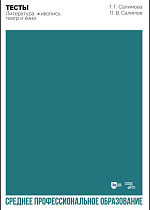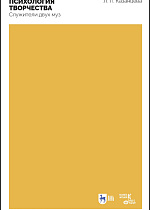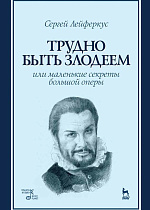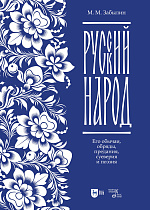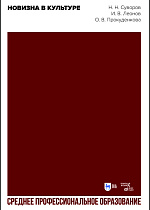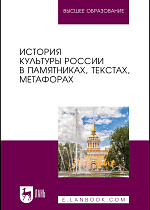История отечественной культуры - все книги по дисциплине. Издательство Лань
Сохранить список:
Excel
Excel
Закрыть
Выгрузка списка книг доступна только авторизованным пользователям. Авторизоваться
Горный парк «Рускеала» — объект культурного наследия и главный туристический комплекс Республики Карелия.
На месте заполненного грунтовыми водами бывшего карьера до 1990-х годов функционировал мраморно-известковый завод, а каменоломни Рускеалы начинают свою историю с 1765 году.
В книге подробно рассказывается история добычи мрамора на Рускеальских мраморных ломках, о применении рускеальского мрамора в архитектуре Санкт-Петербурга.
Книга полезна и интересна краеведам, историкам, географам, геологам, работникам музеев, экскурсоводам и туристам.
The Ruskeala Mountain Park is a cultural heritage location and the main tourist complex of the Republic of Karelia.
There used to be a marble and lime factory at the place of a former quarry until the 1990s, while the Ruskeala quarries were started to be developed as far as in 1765.
The book tells the detailed story of a marble mining at the Ruskeala marble quarries, and the use of Ruskeala marble in the architecture of St. Petersburg.
The book is useful and interesting for local historians, geographers, geologists, museum workers, tour guides, and tourists.
На месте заполненного грунтовыми водами бывшего карьера до 1990-х годов функционировал мраморно-известковый завод, а каменоломни Рускеалы начинают свою историю с 1765 году.
В книге подробно рассказывается история добычи мрамора на Рускеальских мраморных ломках, о применении рускеальского мрамора в архитектуре Санкт-Петербурга.
Книга полезна и интересна краеведам, историкам, географам, геологам, работникам музеев, экскурсоводам и туристам.
The Ruskeala Mountain Park is a cultural heritage location and the main tourist complex of the Republic of Karelia.
There used to be a marble and lime factory at the place of a former quarry until the 1990s, while the Ruskeala quarries were started to be developed as far as in 1765.
The book tells the detailed story of a marble mining at the Ruskeala marble quarries, and the use of Ruskeala marble in the architecture of St. Petersburg.
The book is useful and interesting for local historians, geographers, geologists, museum workers, tour guides, and tourists.
Учебное пособие включает восемь тем по актуальным вопросам теории и истории культуры. Особое внимание уделяется сущности феномена культуры, ее типологии, научным школам, религиозным основам. Раскрываются характерные черты и ментальные особенности западной, мусульманской и российской культуры. Анализируются глобальные проблемы современной цивилизации и выявляется роль России в их решении. К каждой теме разработаны контрольные вопросы для самопроверки знаний.
Соответствует современным требованиям Федерального государственного образовательного стандарта среднего профессионального образования и профессиональным квалификационным требованиям.
Издание предназначено для студентов профессиональных образовательных организаций всех направлений подготовки, изучающих дисциплину «Культурология».
Соответствует современным требованиям Федерального государственного образовательного стандарта среднего профессионального образования и профессиональным квалификационным требованиям.
Издание предназначено для студентов профессиональных образовательных организаций всех направлений подготовки, изучающих дисциплину «Культурология».
Вашему вниманию предлагается сборник тестов, состоящий из более чем тысячи вопросов. Первый раздел посвящен общим вопросам географии, культуры, истории России и истории русской музыки, литературы, живописи, отечественного театра и кино. Остальные три раздела посвящены соответственно зарубежной литературе, живописи, театру и кино. Тесты прекрасно подойдут для подготовки к коллоквиумам, экзаменам и зачетам по направлениям «литературоведение», «киноведение», «искусствоведение», «театроведение», «режиссура», «актер театра и кино», а также «музыкальная журналистика», «музыковедение», «дирижирование», и будут весьма полезны не только выпускникам, абитуриентам и студентам, но и педагогам студий, специализированных школ, училищ и вузов.
Соответствует современным требованиям Федерального государственного образовательного стандарта среднего профессионального образования и профессиональным квалификационным требованиям.
Пособие предназначено для студентов и преподавателей средних специальных учебных заведений.
The current edition represents a collection of tests consisting of more than a thousand questions. The first section is devoted to general questions on geography, culture, history of Russia and the history of Russian music, literature, painting, Russian theatre and cinema. The other three sections are devoted to foreign literature, painting, theatre and cinema. Thе tests are perfect for getting ready for colloquiums, exams and tests in the following areas: “literary studies”, “film studies”, “arts studies”, “theatre studies”, “directing”, “theatre and film actor”, as well as “music journalism”, “musicology”, “conducting”, and will be quite useful not only for graduates, applicants and students, but also for teachers of studios, specialized schools, colleges and higher schools.
Corresponds to the modern requirements of the Federal State Educational Standard of Secondary Vocational Education and professional qualification requirements.
The textbook is intended for students and teachers of colleges.
Соответствует современным требованиям Федерального государственного образовательного стандарта среднего профессионального образования и профессиональным квалификационным требованиям.
Пособие предназначено для студентов и преподавателей средних специальных учебных заведений.
The current edition represents a collection of tests consisting of more than a thousand questions. The first section is devoted to general questions on geography, culture, history of Russia and the history of Russian music, literature, painting, Russian theatre and cinema. The other three sections are devoted to foreign literature, painting, theatre and cinema. Thе tests are perfect for getting ready for colloquiums, exams and tests in the following areas: “literary studies”, “film studies”, “arts studies”, “theatre studies”, “directing”, “theatre and film actor”, as well as “music journalism”, “musicology”, “conducting”, and will be quite useful not only for graduates, applicants and students, but also for teachers of studios, specialized schools, colleges and higher schools.
Corresponds to the modern requirements of the Federal State Educational Standard of Secondary Vocational Education and professional qualification requirements.
The textbook is intended for students and teachers of colleges.
В книге показывается единство творческой личности, проявляющей себя в двух видах творчества – литературном и музыкальном. В этой связи востребованным стало музыкальное наследие Ж.Ж. Руссо, Э.Т.А. Гофмана, А. Грибоедова, М. Кузмина, В. Одоевского, Н. Огарева, Б. Пастернака, Ф. Гарсиа Лорки и литературное – Ф. Шуберта, М. Мусоргского, П. Чайковского, А. Скрябина, М. Чюрлёниса. Соответствует современным требованиям Федерального государственного образовательного стандарта среднего профессионального образования и профессиональным квалификационным требованиям.
Издание адресовано студентам и преподавателям средних специальных учебных заведений.
The book shows the unity of an artist’s personality, expressing itself in two types of creativity, literary and musical. In this regard, the musical heritage of J. J. Rousseau, E. T. A. Hoffman, A. Griboyedov, M. Kuzmin, V. Odoevsky, N. Ogarev, B. Pas-ternak, F. Garcia Lorca and the literary heritage of F. Schubert, M. Mussorgsky, P. Tchaikovsky, A. Scriabin, M. Čiurlionis became in demand. Corresponds to the modern requirements of the Federal State Educational Standard of Secondary Vocational Education and professional qualification requirements.
The textbook is intended for students and teachers of colleges.
Издание адресовано студентам и преподавателям средних специальных учебных заведений.
The book shows the unity of an artist’s personality, expressing itself in two types of creativity, literary and musical. In this regard, the musical heritage of J. J. Rousseau, E. T. A. Hoffman, A. Griboyedov, M. Kuzmin, V. Odoevsky, N. Ogarev, B. Pas-ternak, F. Garcia Lorca and the literary heritage of F. Schubert, M. Mussorgsky, P. Tchaikovsky, A. Scriabin, M. Čiurlionis became in demand. Corresponds to the modern requirements of the Federal State Educational Standard of Secondary Vocational Education and professional qualification requirements.
The textbook is intended for students and teachers of colleges.
Сергей Петрович Лейферкус (р. 1946) — российский оперный певец (баритон). В своей книге автор рассказывает различные истории, трагические и комические, из своей творческой жизни. Народный артист даёт советы молодым певцам и раскрывает секреты большой оперы. Особое место в книге занимает рассказ о сотрудничестве автора с великими певцами, дирижёрами и режиссёрами. Издание адресовано студентам-вокалистам, артистам музыкального театра, а также всем, кто интересуется оперным искусством..
Книга, впервые напечатанная в 1880 году (Издание М. Березина, Москва), содержит сведения о русских праздниках, обрядах, суевериях и предрассудках, домашней жизни, народной медицине, приметах, пословицах, поговорках, песнях и музыке. В труде Забылина – выдающегося русского этнографа второй половины XIX века и знатока народного быта, заложившего основы отечественного народоведения – рассказывается об охоте и досуге, старинном травнике и народном цветнике, одежде, о колдунах, ведьмах и другой нечистой силе.
Пособие отражает главные вехи в развитии русского образа жизни – понятий, труда, быта, жилища, одежды – воплощенного в материальных памятниках, искусстве, праве, языке и фольклоре.
The book, first published in 1880 (by M. Berezin Publishing, Moscow), provides information on Russian holidays, rituals, superstitions and prejudices, home life, folk medicine, signs, proverbs, sayings, songs and music. The author, being an outstanding Russian ethnographer of the second half of the 19th century and the folk life expert, who laid the foundations of Russian folklore studies, talks in his book about hunting and leisure, an old herbalist and folk flower garden, clothing, sorcerers, witches and other evil spirits.
The textbook reflects the milestones in the evolution of the Russian way of life, i.e. concepts, work, everyday life, housing, clothing, embodied in material artifacts, arts, law, language and folklore.
Пособие отражает главные вехи в развитии русского образа жизни – понятий, труда, быта, жилища, одежды – воплощенного в материальных памятниках, искусстве, праве, языке и фольклоре.
The book, first published in 1880 (by M. Berezin Publishing, Moscow), provides information on Russian holidays, rituals, superstitions and prejudices, home life, folk medicine, signs, proverbs, sayings, songs and music. The author, being an outstanding Russian ethnographer of the second half of the 19th century and the folk life expert, who laid the foundations of Russian folklore studies, talks in his book about hunting and leisure, an old herbalist and folk flower garden, clothing, sorcerers, witches and other evil spirits.
The textbook reflects the milestones in the evolution of the Russian way of life, i.e. concepts, work, everyday life, housing, clothing, embodied in material artifacts, arts, law, language and folklore.
В книге показывается единство творческой личности, проявляющей себя в двух видах творчества – литературном и музыкальном. В этой связи востребованным стало музыкальное наследие Ж. Ж. Руссо, Э. Т. А. Гофмана, А. Грибоедова, М. Кузмина, В. Одоевского, Н. Огарева, Б. Пастернака, Ф. Гарсиа Лорки и литературное – Ф. Шуберта, М. Мусоргского, П. Чайковского, А. Скрябина, М. Чюрлёниса.
Издание адресовано интересующимся литературой и музыкой. Оно может быть полезным музыкантам-исполнителям, лекторам-музыковедам, педагогам средних и высших учебных заведений, преподающим культурологию, эстетику, психологию творчества, литературу, музыку, и их воспитанникам, а также любителям музыки и профессионалам.
The book shows the unity of an artist’s personality, expressing itself in two types of creativity, literary and musical. In this regard, the musical heritage of J. J. Rousseau, E. T. A. Hoffman, A. Griboyedov, M. Kuzmin, V. Odoevsky, N. Ogarev, B. Pas-ternak, F. Garcia Lorca and the literary heritage of F. Schubert, M. Mussorgsky, P. Tchaikovsky, A. Scriabin, M. Čiurlionis became in demand.
The edition is addressed to those interested in literature and music. It may be useful for performing musicians, lecturers-musicologists, teachers at colleges and higher schools teaching cultural studies, aesthetics, psychology of creativity, literature, music, and their students, as well as music lovers and professionals.
Издание адресовано интересующимся литературой и музыкой. Оно может быть полезным музыкантам-исполнителям, лекторам-музыковедам, педагогам средних и высших учебных заведений, преподающим культурологию, эстетику, психологию творчества, литературу, музыку, и их воспитанникам, а также любителям музыки и профессионалам.
The book shows the unity of an artist’s personality, expressing itself in two types of creativity, literary and musical. In this regard, the musical heritage of J. J. Rousseau, E. T. A. Hoffman, A. Griboyedov, M. Kuzmin, V. Odoevsky, N. Ogarev, B. Pas-ternak, F. Garcia Lorca and the literary heritage of F. Schubert, M. Mussorgsky, P. Tchaikovsky, A. Scriabin, M. Čiurlionis became in demand.
The edition is addressed to those interested in literature and music. It may be useful for performing musicians, lecturers-musicologists, teachers at colleges and higher schools teaching cultural studies, aesthetics, psychology of creativity, literature, music, and their students, as well as music lovers and professionals.
Музыкальная культура Древней Руси — одна из ярких, но малоизученных страниц отечественной музыкальной культуры. Древняя Русь обладала «своим голосом», ее музыкальный мир был наполнен звуками народных инструментов и песен, церковных песнопений, звоном колоколов. Свидетельством высокой развитости музыкальной культуры Древней Руси является множество певческих рукописей, которые хранятся в архивах. В них содержится множество песнопений, разных распевов, которые записаны знаменной, кондакарной, демественной, путевой и другими нотациями, многие из них не расшифрованы.Сохранившиеся колокольни являются свидетельством большой любви на Руси к колоколам и звонам. Несмотря на значительное влияние Византии, особенно в эпоху Киевской Руси, и явные заимствования, на Руси сформировался свой особый тип музыкального интонирования, который и доныне отчасти сохранился в песнопениях старообрядцев. Значение музыкальной культуры Древней Руси в полной мере еще не оценено. Русские старинные песни, напевы, песнопения и звоны оказались основой, под воздействием которой развивалась музыкальная культура России нового времени. Для специалистов, занимающихся исследованиями в области литургики, древнерусской традиции церковного и народного пения, традиции старообрядческого пения, православной церковной традиции колокольного звона, истории Русской Церкви, истории России, для филологов, фольклористов, искусствоведов, культурологов.
Соответствует современным требованиям Федерального государственного образовательного стандарта среднего профессионального образования и профессиональным квалификационным требованиям.
Адресована студентам и преподавателям средних специальных учебных заведений.
The musical culture of Ancient Rus is one of the most vivid but understudied phenomena of the national musical culture. Ancient Rus had its „own voice“, its musical world was full of sounds of folk instruments and songs, canons and chimes of bells. Many cantatory manuscripts deposited in our archives show the sophistication of the musical culture of Ancient Rus. These manuscripts contain a lot of canons and different plainsongs written in the znamenny chant, kondakar, demestvenny, putevoy and other chants, many of them undeciphered. The remaining bell towers indicate how the people of Rus loved bells and chimes. Despite the significant influence of the Byzantine Empire, especially during the period of Kievan Rus, and evident adoptions, the unique type of musical intonement has developed in Rus — to this day, it partly exists in canons of the Old Believers. The role of the musical culture of Ancient Rus has not been completely examined yet. The old Russian songs, tunes, canons and chimes are the foundation that has affected the development of the Russian musical culture of the modern era. For researchers on liturgics, the Old Russian tradition of liturgical and folk chants, chants of the Old Believers, orhodox liturgical tradition of chimes, history of the Russian church, Russian history, for philologists, folklorists, art historians and culturologists.
Corresponds to the modern requirements of the Federal State Educational Standard of Secondary Vocational Education and professional qualification requirements.
The textbook is intended for the students of colleges.
Соответствует современным требованиям Федерального государственного образовательного стандарта среднего профессионального образования и профессиональным квалификационным требованиям.
Адресована студентам и преподавателям средних специальных учебных заведений.
The musical culture of Ancient Rus is one of the most vivid but understudied phenomena of the national musical culture. Ancient Rus had its „own voice“, its musical world was full of sounds of folk instruments and songs, canons and chimes of bells. Many cantatory manuscripts deposited in our archives show the sophistication of the musical culture of Ancient Rus. These manuscripts contain a lot of canons and different plainsongs written in the znamenny chant, kondakar, demestvenny, putevoy and other chants, many of them undeciphered. The remaining bell towers indicate how the people of Rus loved bells and chimes. Despite the significant influence of the Byzantine Empire, especially during the period of Kievan Rus, and evident adoptions, the unique type of musical intonement has developed in Rus — to this day, it partly exists in canons of the Old Believers. The role of the musical culture of Ancient Rus has not been completely examined yet. The old Russian songs, tunes, canons and chimes are the foundation that has affected the development of the Russian musical culture of the modern era. For researchers on liturgics, the Old Russian tradition of liturgical and folk chants, chants of the Old Believers, orhodox liturgical tradition of chimes, history of the Russian church, Russian history, for philologists, folklorists, art historians and culturologists.
Corresponds to the modern requirements of the Federal State Educational Standard of Secondary Vocational Education and professional qualification requirements.
The textbook is intended for the students of colleges.
Новизна в культуре является заметным признаком, определяющим её ценность, отношение к прошлому и дальнейшее движение. Новизна рассматривается как возникшее качество, обращённое в будущее, содержащее потенцию дальнейших изменений. B обновлении всегда заметно отношение к традиции, соединяющее крепкими связями прошлое и будущее. Новизна проявляется в изменении телесного и вещественного, в переоценке ценностей, в творческой деятельности. Интеллектуальная деятельность проникнута постоянным обновлением образов и смыслов, корректирует память, вносит в неё неожиданные изменения. B книге исследованы отношения бытия и присутствия, которые становятся основанием и утверждением онтологии новизны. Деструкция культуры, поиск истины, определение правды и пребывание в воображаемых иллюзиях исследуются на фоне утверждения новизны. Называние, поиск имени нового идёт параллельно процессу созидания. Исследован эстетический эффект нового, рассмотренного в ауре искусства. Изменения в истории культуры и динамичные перемены в культуре ХХ–ХХI веков открылись в аспекте понимания и трактовки феномена новизны. Особое место занимает выявление новизны в разнообразных культурных практиках – повседневности, межкультурной коммуникации и массовой культуре. Теоретические положения в книге подкреплены и проверены смыслами и образами художественного творчества.
Соответствует современным требованиям Федерального государственного образовательного стандарта среднего профессионального образования и профессиональным квалификационным требованиям. Книга адресована студентам средних специальных учебных заведений.
Novelty in culture is a notable sign that determines its value, attitude to the past and further movement. Novelty is considered as an newly appeared quality, that looks into the future, containing the potential for further changes. In renewal, the attitude towards tradition is always noticeable, connecting the past and the future with strong ties. Novelty expresses itself in a change of the bodily and the material, in a change of values, in creative activity. Intellectual activity is filled with a constant renewal of images and meanings, it corrects the memory, and makes unexpected changes in it. The authors explore the relations of existence and presence, which become the basis and affirmation of the ontology of novelty. The destruction of culture, the search for truth, the definition of truth and the being in imaginary illusions are studied against the background of the assertion of novelty. The naming, the search for a new name goes parallel to the process of creation. The aesthetic effect of the new, considered in the aura of art has been studied. Changes in the history of culture and dynamic changes in the culture of the 20th – 21st centuries were revealed in the aspect of understanding and interpretation of the phenomenon of novelty. A special place is occupied by the identification of novelty in diverse cultural practices — everyday life, intercultural communication and mass culture. The theoretical statements in the book are backed up and tested by the meanings and images of artistic creativity.
Corresponds to the modern requirements of the Federal State Educational Standard of Secondary Vocational Education and professional qualification requirements. The book is addressed to students of colleges.
Соответствует современным требованиям Федерального государственного образовательного стандарта среднего профессионального образования и профессиональным квалификационным требованиям. Книга адресована студентам средних специальных учебных заведений.
Novelty in culture is a notable sign that determines its value, attitude to the past and further movement. Novelty is considered as an newly appeared quality, that looks into the future, containing the potential for further changes. In renewal, the attitude towards tradition is always noticeable, connecting the past and the future with strong ties. Novelty expresses itself in a change of the bodily and the material, in a change of values, in creative activity. Intellectual activity is filled with a constant renewal of images and meanings, it corrects the memory, and makes unexpected changes in it. The authors explore the relations of existence and presence, which become the basis and affirmation of the ontology of novelty. The destruction of culture, the search for truth, the definition of truth and the being in imaginary illusions are studied against the background of the assertion of novelty. The naming, the search for a new name goes parallel to the process of creation. The aesthetic effect of the new, considered in the aura of art has been studied. Changes in the history of culture and dynamic changes in the culture of the 20th – 21st centuries were revealed in the aspect of understanding and interpretation of the phenomenon of novelty. A special place is occupied by the identification of novelty in diverse cultural practices — everyday life, intercultural communication and mass culture. The theoretical statements in the book are backed up and tested by the meanings and images of artistic creativity.
Corresponds to the modern requirements of the Federal State Educational Standard of Secondary Vocational Education and professional qualification requirements. The book is addressed to students of colleges.
Учебное пособие знакомит студентов с важнейшими явлениями культуры России, которые входят в комплекс нашей культурной памяти. Особенность его состоит в том, что историко-культурная проблематика каждой исторической эпохи дается через анализ ключевых памятников, в числе которых: литературные произведения, творения архитектуры, живописные полона, театральные постановки, а также идейные движения, художественные образы и метафоры. Концептуально авторы опирались на идею «культурной памяти», показывающую, каким образом памятники, тексты и метафоры воспринимаются гражданами России как выражение самых сокровенных смыслов и ценностей их национальной и цивилизационной идентичности. Остается добавить, что материал расположен в хронологическом порядке, в предисловии даны методические указания, а каждый параграф сопровождается проверочными заданиями.
Учебное пособие предназначено в первую очередь студентам, изучающим дисциплины «История культуры России», «История отечественной культуры». А также может быть полезно всем, кто интересуется историей культуры нашей страны.
Учебное пособие предназначено в первую очередь студентам, изучающим дисциплины «История культуры России», «История отечественной культуры». А также может быть полезно всем, кто интересуется историей культуры нашей страны.


